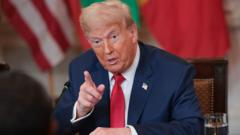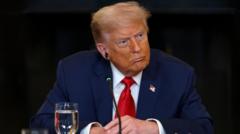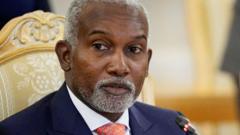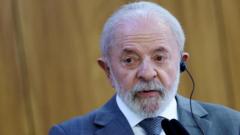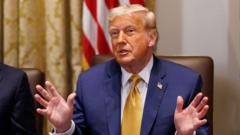The recent escalation in the Canada-U.S. trade dispute highlights Prime Minister Mark Carney's shifting stance amidst increasing pressure from President Donald Trump. Following Trump's unexpected announcement of a 35% tariff on Canadian imports set to begin next month, Carney's approach to the negotiation table is now under scrutiny. The prime minister, who promised to adopt a more assertive posture during trade talks, is faced with accusations of conceding to Trump’s demands.
Canada's Trade Standoff: Carney's Response to Trump's Tariff Threats
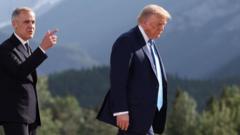
Canada's Trade Standoff: Carney's Response to Trump's Tariff Threats
Prime Minister Mark Carney faces pressure as new U.S. tariffs loom over Canadian goods, raising questions about his negotiation strategies with President Trump.
Carney's government recently backtracked on implementing a Digital Services Tax (DST) targeting major technology firms, a move interpreted as bowing to pressure from the U.S. This has sparked debate within Canada regarding the effectiveness of Carney's “elbows up” approach—a reference to a competitive style in hockey signaling determination and grit. Critics argue that recent concessions have failed to deliver results, with some claiming that the government is engaged in a futile "chicken dance."
Notably, while many experts still believe in Carney's potential to negotiate successfully, they warn that the outcome of the trade talks will critically define his political future. Roland Paris, a former adviser on U.S.-Canada relations, pointed out that if the negotiations end poorly, Carney risks significant backlash at home.
Despite the pressure, Canadian officials continue to project a united front against the tariffs. Industry Minister Melanie Joly stated the government is committed to defending its interests while navigating the unpredictable political landscape of the U.S. Still, many Canadians unite across party lines to express their concerns, showcasing a national consensus on the need for a strong response to Trump's aggressive stance.
Economists stress that, despite Canada’s smaller economy, there is room for leverage, especially since American consumers will ultimately bear the brunt of the tariffs. Carney's administration has taken steps to decrease dependency on the U.S. by fostering international partnerships, further complicating the landscape of these trade negotiations.
As the deadline for a new agreement approaches, the situation remains fluid. While the tariffs hinge heavily on ongoing discussions, both sides continue to grapple with the implications of a deal that could redefine economic relations for years to come.
Notably, while many experts still believe in Carney's potential to negotiate successfully, they warn that the outcome of the trade talks will critically define his political future. Roland Paris, a former adviser on U.S.-Canada relations, pointed out that if the negotiations end poorly, Carney risks significant backlash at home.
Despite the pressure, Canadian officials continue to project a united front against the tariffs. Industry Minister Melanie Joly stated the government is committed to defending its interests while navigating the unpredictable political landscape of the U.S. Still, many Canadians unite across party lines to express their concerns, showcasing a national consensus on the need for a strong response to Trump's aggressive stance.
Economists stress that, despite Canada’s smaller economy, there is room for leverage, especially since American consumers will ultimately bear the brunt of the tariffs. Carney's administration has taken steps to decrease dependency on the U.S. by fostering international partnerships, further complicating the landscape of these trade negotiations.
As the deadline for a new agreement approaches, the situation remains fluid. While the tariffs hinge heavily on ongoing discussions, both sides continue to grapple with the implications of a deal that could redefine economic relations for years to come.

